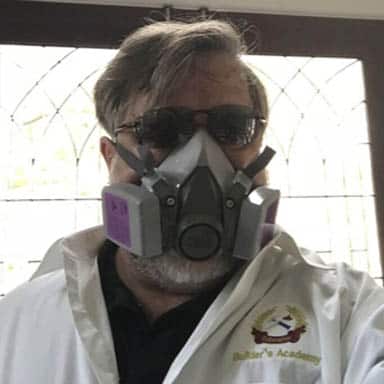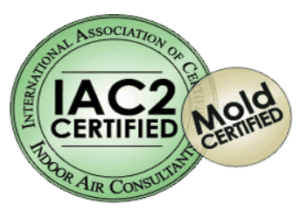Air Quality Testing
Air Quality Testing following mold remediation, known as post-remediation testing, is absolutely a must! This verification testing ensures that the mold remediation has been performed correctly, as evidenced by the laboratory results. This should show that the levels of mold spores are within the normal range for all types of mold spores compared to an outside control sample.
After mold remediation is completed, but before containment is removed and before any reconstruction has taken place, air quality testing is necessary. No matter how “clean” the area remediated may be, skipping this mold testing is not a good idea.
When should the post remediation mold testing be performed?
Post remediation mold testing should be performed no earlier than 24 hours and preferably 48 hours after mold remediation is completed, during which time windows and doors should remain closed and any air cleaning devices, i.e. air cleaners/purifiers/air scrubbers, must be turned off. In addition, the testing should not be performed during or immediately following rain. Waiting a minimum of two hours after the rain has stopped is mandatory. Going in and out of the building is okay as long as the windows and doors do not remain open. If any one of these conditions is not met, test results will be invalid.
Post remediation mold testing includes:
- A visual observation of the area(s) remediated,
- Air testing inside the containment area(s) while the containment is still intact, and
- One outside air sample as a control.
The mold inspector notes the conditions of the surrounding and take pictures to keep a visual record. Post-remediation mold testing uses the same procedure as the original testing where each air sample is compared to one outside control sample. It is best that the clearance test be performed by the same company that carried out the original testing. This will ensure that the same methodology is being followed – the same volume of air collected, the same brand of spore trap employed, and the analysis performed at the same laboratory. This consistency will provide greater accuracy when comparing the levels of mold spores before and after remediation.
If the laboratory results show an elevated amount of mold spores, the mold inspector will recommend further remediation followed by another post-remediation test. An elevated amount of spores can mean one of three things:
- The mold remediators performed the job poorly.
- The mold remediators were competent but they have either missed something, or did not remediate enough.
- Not enough air filtration (air scrubber) operation to remove excess mold spores from the contained area.
Air Clearance
With favorable results regarding the air quality, the mold inspector states in his report that the remediation passed air clearance and recommends that reconstruction can begin. Upon receipt of satisfactory laboratory results the mold remediator removes the containment area, and he, or another contractor reconstruct the wall(s) or ceiling.
Mold testing following mold remediation provides a scientific verification that the mold problem has been eradicated, as well as providing the occupants with peace of mind.


